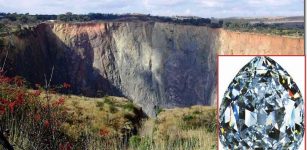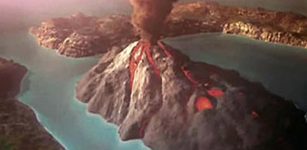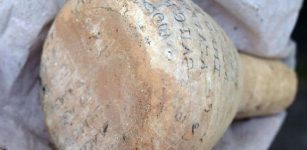Fossil Study: Coelacanths Thrived In Switzerland After A Mass Extinction
Conny Waters - AncientPages.com - The study of a new species of coelacanth from the Middle Triassic period, with a strange morphology for these fish known as "living fossil," show the formation of several species in a short time, after a mass extinction that occurred 252 million years ago, with more than 80% of marine species disappearing.
Reconstitution of a Rieppelia heinzfurreri coelacanth discovered in Ticino. Credit: Philippe-Wagneur-MHNG
Researchers from the Museum of Natural History of Geneva and the University of Geneva (UNIGE) have compared fossils discovered in the Grisons and in Ticino.
Their findings are published in the journal Scientific Reports.
Coelacanths are strange fish that are currently only known from two species found along the East African coast and in Indonesia. Their fins, among other characteristics, show that these animals are evolutionarily closer to terrestrial vertebrates, including humans, than to other fish. They therefore give an idea of our species' fish ancestor looked like. Over the 420 million years that the coelacanth lineage has existed, the various species have evolved quite slowly, earning them the nickname "living fossils."
A few years ago, two coelacanth fossils, discovered in Triassic rocks in the Grisons region of eastern Switzerland, turned out to belong to a new very strange-looking species, Foreyia maxkuhni, with a very short body and a dome-shaped skull.
This initial discovery prompted researchers to look at other coelacanth fossils discovered in the UNESCO World Heritage site of Monte San Giorgio in Ticino (Italian Switzerland). These fossils are the same age as those from Grisons. These specimens were discovered in the mid-20th century and are preserved in the Paleontological Museum of Zurich. They have never been studied in detail because of the difficulty of interpreting them.
A new species of coelacanth
During his doctoral thesis, Christophe Ferrante, a researcher at the UNIGE Faculty of Science, demonstrated that it is a new species of coelacanth, evolutionarily very close to the species from the Grisons, named Rieppelia heinzfurreri. Some characteristics of this species are similar to those of Foreyia while others are curiously reversed: one has small front fins and the other has huge ones, one has small opercles and the another has gigantic ones, etc.
This study shows that these two species (as well as two others with more classic morphology) are part of a small evolutionary radiation, i.e. the formation of several species in a short time and a small space. This phenomenon is observed in certain groups of organisms but has been identified for the first time in coelacanths.
The biggest mass extinction of the last 500 million years occurred 252 million years ago, with more than 80% of marine species disappearing due to huge volcanic eruptions in Siberia.
The strange Swiss coelacanths, which lived about 10 million years after this disaster, demonstrate that they could still take advantage of the special conditions of the post-extinction Earth environment to evolve into unique forms throughout their history.
These niches were later reinvested by other groups, including all the major groups of bony ray-finned fishes that still occupy them today.
Lionel Cavin's team at the Natural History Museum in Geneva continues the study of these strange postapocalyptic coelacanths from the Triassic by describing new fossils discovered in various places around the world and by looking at the potential genetic characteristics at the origin of these bizarre forms on the basis of comparisons with the genomes of present-day vertebrates.
Written by Conny Waters - AncientPages.com Staff Writer





















